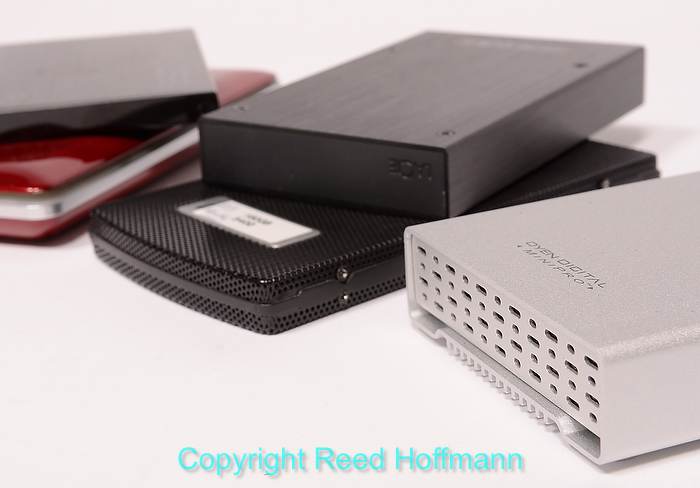In the old days, photographers worried about keeping track of their pictures and how long they would last. Both film and prints deteriorate over time. With digital that’s no longer a worry – digital files can last forever, since they’re just numbers. The trick is keeping track of them and making new copies as storage technology changes.
If you shoot a lot of photos, odds are you already have a workflow for storing and backing them up. People who shoot only occasionally are less likely to keep track of their photos, since they don’t deal with them very often. Regardless of whether you shoot a little or a lot, the end of the year is a good time to review your organization and storage, and make sure those pictures you’ve shot are well cared for.
The first step is to decide whether the system you have now is good, or needs to be improved. What matters most is that it makes sense to you, the filenames of the photos are unique (can’t be repeated) and that you can find photos pretty easily. If all of those are true, then you just need to make sure you’re adequately backing up your photos. If any of those aren’t true, then keep reading.
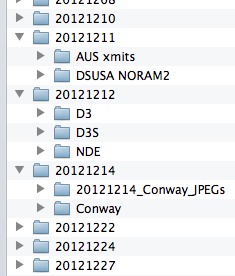
A screenshot showing how I organize my files, with the folder name being the date the photos were shot, then the shoots themselves.
I’m a big fan of organizing based on date shot. Each year I create a folder named for that year, and download all the photos I shoot that year into it. And rather than simply dump all those pictures in there, I create a folder for each day I shoot, and all photos from that day go into that folder.
The next step is to make sure the filenames for those photos are unique and give information about them. The number the camera gives a photo when you shoot it has no meaning outside the camera, and in time will be repeated. All good image programs offer the ability to rename files, and can usually do that during the download process, saving you time. My photos have names with the date first, then one word (or group of letters and/or numbers) that says something about what the photos are, and finally a sequential number. For instance, the 159th photo I shot on the fourth day of the Oregon workshop I taught on June 23 this year is titled 20120623_OregonD4_159, and it’s inside a folder named 20120623.
So at this point, I have a year folder (2012), inside of which are dated folders which contain all the photos I shot that day, and every photo has a filename with that date and some other useful information. And my browser (Photo Mechanic by Camerabits) does that for me
When looking for my best photos, I don’t want to dig through all those folders. That leads to the next part of my organization, which is to create small collections of the best photos. I’d prefer these collections were bigger, but I’m just not that good J. That means throughout the year, I take my favorite pictures and copy them to another folder, this one titled “2012 Best.” And at the end of the year, I comb through that folder and select just the very best, which are then copied to a “Best of” folder. These smaller collections make it easy for me to backup my best pictures, as well as find them when I need them. Which leads us to backup, which is the final part of the puzzle, and one I review each year in December.
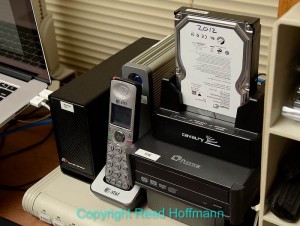
My main stack of hard drives, including the DVD burner. At upper left is a bare bones drive case that lets me save money by buying drives without cases and power supplies.
I always download to my laptop’s internal hard drive, then try to immediately backup to a second, external drive. That’s important – having two copies of your photos. When at home, that second drive is a mirrored drive in my office, which means it contains two hard drives that show as one. If one drive should fail, the data (photos in this case) are still intact on the second one. And every couple of weeks that drive is backed up to another (single hard drive in this case, just in case…). The next step is burning DVDs.
Every couple of months, all of the photos I’ve shot are backed up to DVDs. I’ve seen too many hard drives fail to trust them completely. I’ve considered moving to Blu-Ray, but despite the advantage of higher capacity disks, the small number of Blu-Ray optical drives in use keeps me using DVDs. Yes, it takes time, but I burn DVDs while doing other things in the office, so it’s not a big problem.
At the end of the year, I buy a new hard drive for the coming year (2TB again) and prepare to retire the current year’s hard drive. First I burn all of the “Best of” collections to DVD as well, then wipe the mirrored drive and start over with it for the new year.
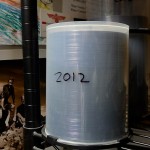
My DVDs for this year, ready to be topped off after the 31st.
So the whole process looks like this:
– On download the photos are re-named and placed in a date-based folder structure.
– Then I copy them to a mirrored hard drive that has this year’s photos.
– I backup that mirrored drive to another hard drive, which is synchronized every month or two.
– Over time I’ve created a set of multiple hard drives with all the photos I’ve ever shot (one hard drive per year the last few).
– Then there are two hard drives (one main, one backup) with all my “best of” collections.
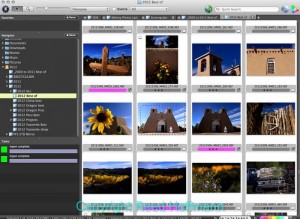
If I do it right, these photos from 2012 will still be with me thirty years from now.
– And lots of DVDs, with every photo I’ve shot over the years on them.
Finally, a copy of each DVD with those “best of” collections goes into my safe deposit box.
When people ask about backing up photos, and how many copies they need, my usual response is, “however many copies lets you sleep soundly at night.” The key is to know that should a disaster strike your house, most (if not all) of your most important photos will survive.
What keeps me awake these days? My kids. They’re both in college now, and shoot lots of photos with their cell phones. And I worry about what’s going to happen to those photos. So I’m looking into ways that the photos on their phones can be automatically backed up to the cloud.
Once you’ve got a system that works well for you, make sure and remind your friends and family to backup their photos. If they don’t, odds are they’ll lose them. It’s a sad fact that while people today are doing a better job documenting their lives than ever before, fewer of those photos will exist in years ahead. Help make sure this doesn’t happen to you, or them.

